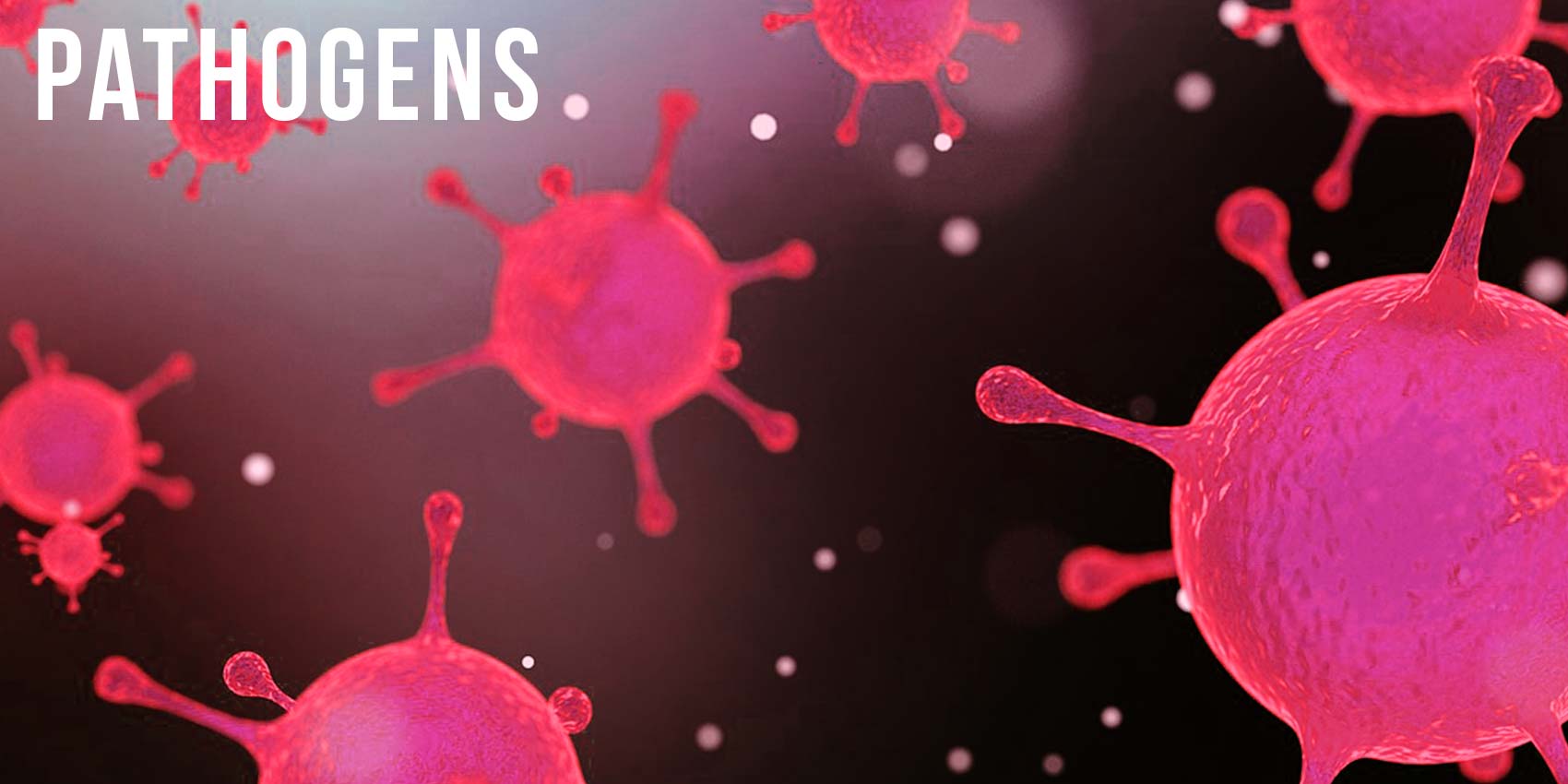14 Sep Pathogens

Pathogens (aka, germs) are the tiny, microscopic organisms that cause disease. When pathogens enter the body, you can develop an infection/illness.
Pathogens come in different forms (viruses, bacteria, fungi and protozoa). And for us to list all the different ones within each category would probably make you want to bang your head repeatedly against the wall, so we’ve decided just throw out some main points….
Bacteria is a type of communicable pathogen that generally needs antibiotics (medications prescribed by doctors) for treatment. Strep throat, pink eye, or even Lyme disease are bacterial infections. Bacteria also like to hang out in food and you can get really sick from food that is improperly cleaned or raw (when it should be cooked)—yeah, we’re talking diarrhea, cramping, vomiting or worse. Food poisoning is a bacterial issue in the gut. In severe cases (usually in the weak or old), it can cause death. Wash your food. And cook it properly when it needs to be cooked.
A virus is a different type of pathogen. While bacteria are relatively complex cells that can live without a host, viruses are not as complex and they can NOT live without a host (you, a dog, a bird, any living thing). Another important difference is that viruses do not respond to antibiotics. The common cold is the most common virus. Other viruses include the flu, hepatitis, chicken pox, measles, mono, herpes, HIV/AIDS, polio, rabies and viral pneumonia. Though you may take medicine when you have these viruses, that medicine is often used to make you FEEL better, but not necessarily combat the disease.
A fungus pathogen is one that actually grows by decomposing and then consuming things. Yeah, we know, ewwww.. athlete’s foot and ringworm are two common fungi diseases. Avoid athlete’s foot and ringworm by wearing flip flops in public showers—fungi grow in warm moist places.
And protozoa? Well, protozoa cause amoebiasis (severe dysentery), toxoplasmosis and malaria—these are all not something commonly found on a playground or often spread among students. So we’ll just move on….
To avoid pathogens you might want to check out the BASIC HYGIENE section. It’s got what you need to avoid pathogens and things like smelly breath and toes.
But here, you are going to continue with some of the results of pathogens: like strep and the flu plus the difference between a bacterial and viral infection.




Post Question:
Make up a name for virus and how one might get it. Goofy ideas welcome!
Answer the post question here
What's being said